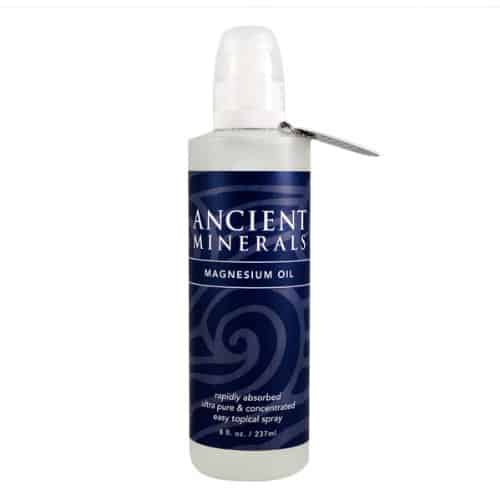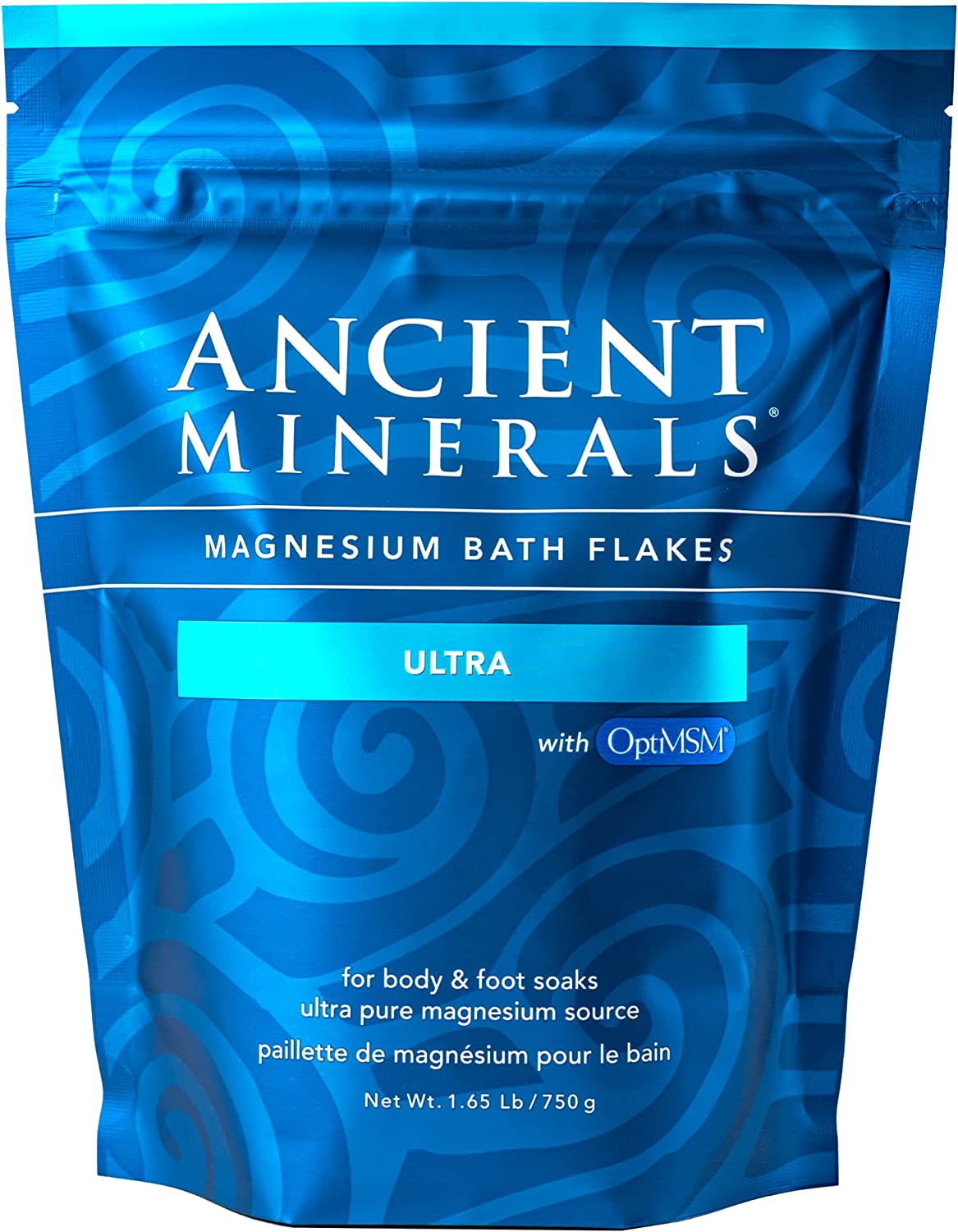How to Make Magnesium Oil & Save 90%
Did you know you can make your own magnesium oil? Magnesium oil soothes sore muscles, relieves pain and stress, and helps to improve sleep.

Did you know you can make your own magnesium oil? Magnesium oil soothes sore muscles, relieves pain and stress, and helps to improve sleep.
You save 90% when you learn how to make magnesium oil with this simple 4-step recipe.
If you suffer from aches and pains, muscle soreness, insomnia, anxiety, stress, joint pain, headaches or migraines, this post is for you.

I posted a while back about magnesium deficiency: Are You Suffering From Magnesium Deficiency? Since then, I’ve gotten emails from readers saying that magnesium has changed their life. I am so excited about magnesium and the positive results that I see, I want to share more about this important mineral and how to supplement with it.
Why We Need Magnesium and How to Supplement with Magnesium Oil
Most of us are deficient in magnesium. When we used to bathe in mineral-rich oceans and streams, and when our crops were not depleted of magnesium, we were not deficient. Ocean water is very rich in magnesium, but how often do we swim in the ocean? Nowadays, we don’t get enough magnesium from our food and it’s not in our water. So we really need to supplement.
Magnesium is not easily absorbed from food or supplements. The best way to take magnesium is transdermally (via the skin).
Eight sprays of magnesium oil delivers about 100 mg of elemental magnesium to the skin.
You can just spray anywhere on the body, although for better absorption, spray on the torso as opposed to the legs or arms. You can also add magnesium oil to your bath or soak you feet in warm water with magnesium oil.
When you spray the magnesium oil on your body, it can sting and feels somewhat oily/sticky to the touch. If you don’t like the stinging, dilute the oil by adding more water. You can also add magnesium oil to your bath water — it’s very concentrated so you don’t need a lot in your bath. Or you can mix it into your favorite body lotion (that’s my favorite way to use it).

Why Use Magnesium Oil
I have personally had great results with magnesium oil. I spray it on my skin every day.
Magnesium is known as the calming mineral, and I don’t know about you but most of us could benefit from some stress reduction.
Many people find that magnesium oil reduces or eliminates aches and pains, helps them to relax and helps them sleep.
Cost Savings of Making Your Own Magnesium Oil
If you would like to save some money, you can make your own magnesium oil using magnesium chloride flakes.
A small bottle of Ancient Minerals magnesium oil spray magnesium oil costs $19 for 8 ounces. That’s $2.37 per ounce.
Ancient Minerals magnesium flakes is only .64 per ounce. You dilute it with water, so it costs only .32 per ounce to make magnesium oil with magnesium flakes.
You can save 90% by making your own magnesium oil with magnesium flakes.

How to Make Magnesium Oil
How to Make Magnesium Oil: Ingredients
Ancient Minerals magnesium flakes (1 cup)
Water, filtered for fluoride, or distilled water (1 cup)
How to Make Magnesium Oil: Equipment
Saucepan made of enameled cast iron, stainless steel or glass saucepan (do not use aluminum or cast iron)
Spray bottle
How to Make Magnesium Oil: Directions
1. Bring the filtered water to a boil.
2. Add the magnesium flakes and stir until dissolved.
3. Remove from heat and let cool.
4. After the mixture has cooled, transfer it to a spray bottle or a plastic travel bottle.
Read More About Magnesium Oil
To learn more about the health benefits of magnesium and magnesium oil, check out the following books:
- Transdermal Magnesium Therapy by Dr. Mark Sircus
- The Magnesium Miracle by Carolyn Dean

How to Make Magnesium Oil: Recipe Notes
It is critical that you use filtered or distilled water.
Make sure your water filter filters out chlorine, fluoride and other toxic chemicals. You don’t want to absorb this stuff into your skin!
Can You Use Epsom Salt Instead of Magnesium Chloride?
Epsom salt (magnesium sulfate) is cheaper than magnesium flakes (magnesium chloride).
You can use epsom salt instead of magnesium flakes.
However, according to the National Institutes of Health, magnesium chloride contains 12 percent magnesium available for absorption. Magnesium sulfate, or that found in Epsom salt, has only 10 percent magnesium available for absorption.
Not only that, but magnesium sulfate as epsom salt is not as pure and not as absorbable by the body as magnesium chloride (magnesium flakes).
Here’s an excerpt from a study on PubMed:
"Magnesium chloride is the best choice because of its clinical and pharmacological effects, and its lower tissue toxicity as compared to magnesium sulfate. Magnesium chloride is more easily assimilated, and therefore more bioavailable or absorbed and utilized by the body. Whereas magnesium sulfate is not as easily absorbed and utilized in the body. Magnesium sulfate is also more rapidly excreted through the kidneys than magnesium chloride, which explains why results don’t last long, and more amounts are needed for desired effects."
So in other words, you’re not going to absorb as much if you use epsom salt… and so you will have to use more to get the same benefits.
So you may as well use the magnesium flakes.
Pin This Post: How to Make Magnesium Oil

Share Your Comments on How to Make Magnesium Oil
How are you benefiting from using magnesium oil or magnesium flakes? Please share your thoughts in the comments below.



Comments ()